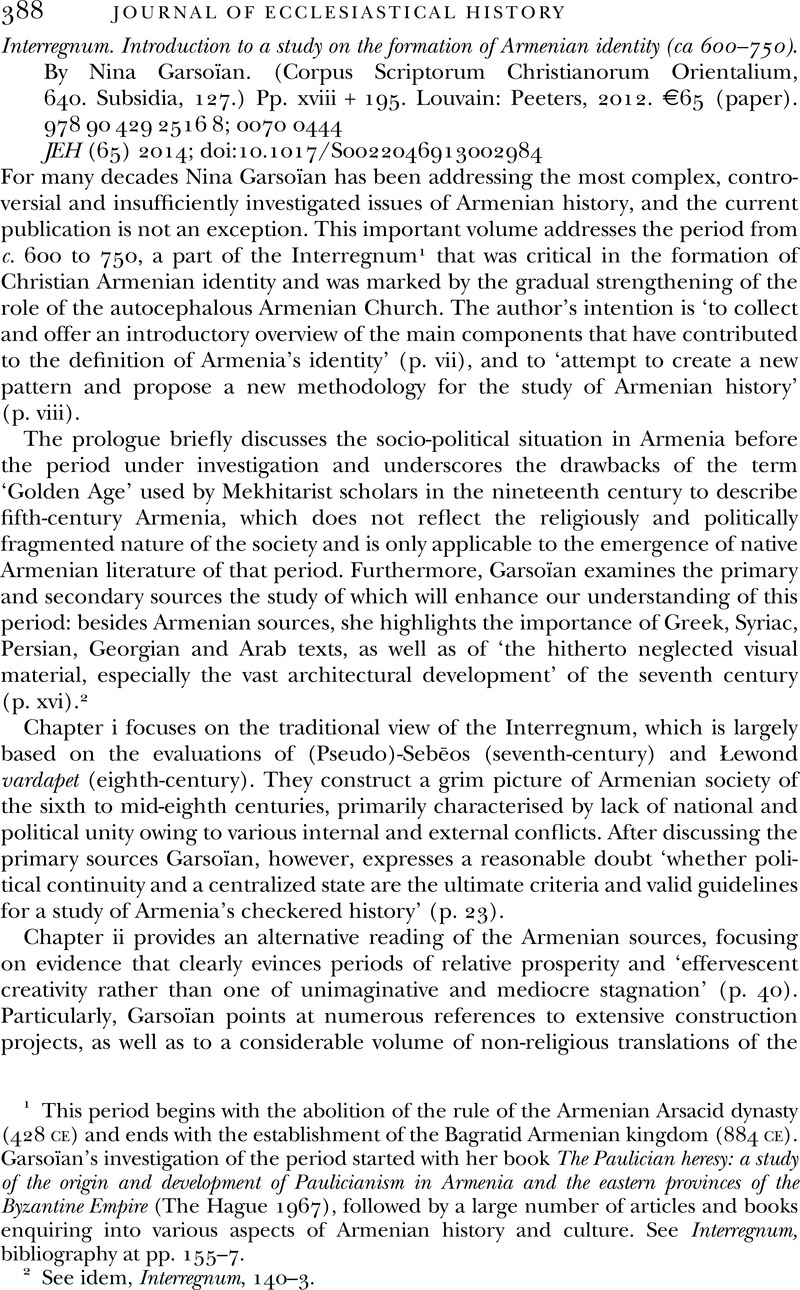No CrossRef data available.
Article contents
Interregnum. Introduction to a study on the formation of Armenian identity (ca 600–750). By Nina Garsoïan. (Corpus Scriptorum Christianorum Orientalium, 640. Subsidia, 127.) Pp. xviii + 195. Louvain: Peeters, 2012. €65 (paper). 978 90 429 2516 8; 0070 0444
Published online by Cambridge University Press: 13 March 2014
Abstract

- Type
- Reviews
- Information
- Copyright
- Copyright © Cambridge University Press 2014
References
1 This period begins with the abolition of the rule of the Armenian Arsacid dynasty (428 ce) and ends with the establishment of the Bagratid Armenian kingdom (884 ce). Garsoïan's investigation of the period started with her book The Paulician heresy: a study of the origin and development of Paulicianism in Armenia and the eastern provinces of the Byzantine Empire (The Hague 1967), followed by a large number of articles and books enquiring into various aspects of Armenian history and culture. See Interregnum, bibliography at pp. 155–7.
2 See idem, Interregnum, 140–3.
3 Namely, idem, L'Église arménienne et le grand schisme d'Orient, Louvain 1999.




